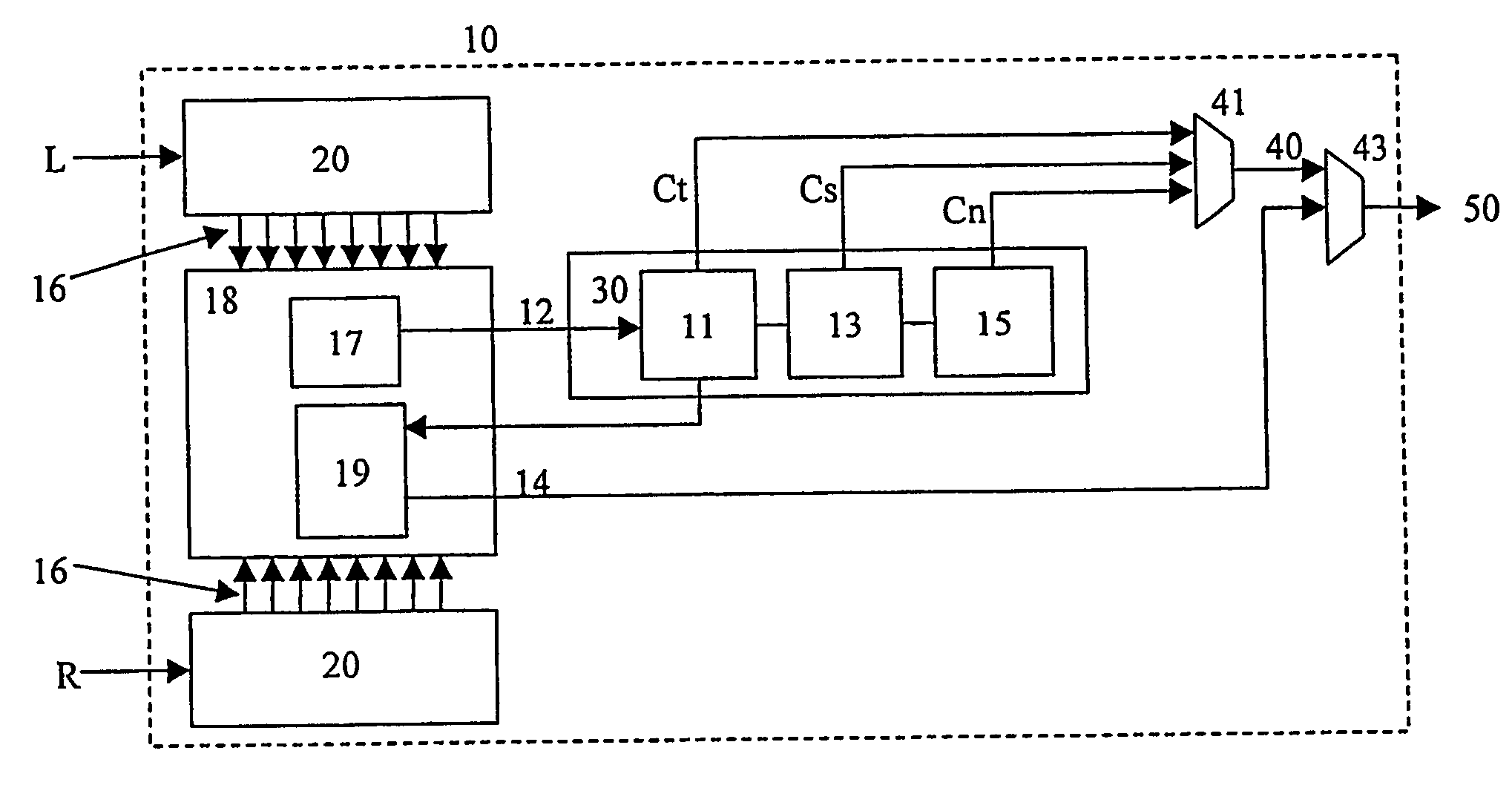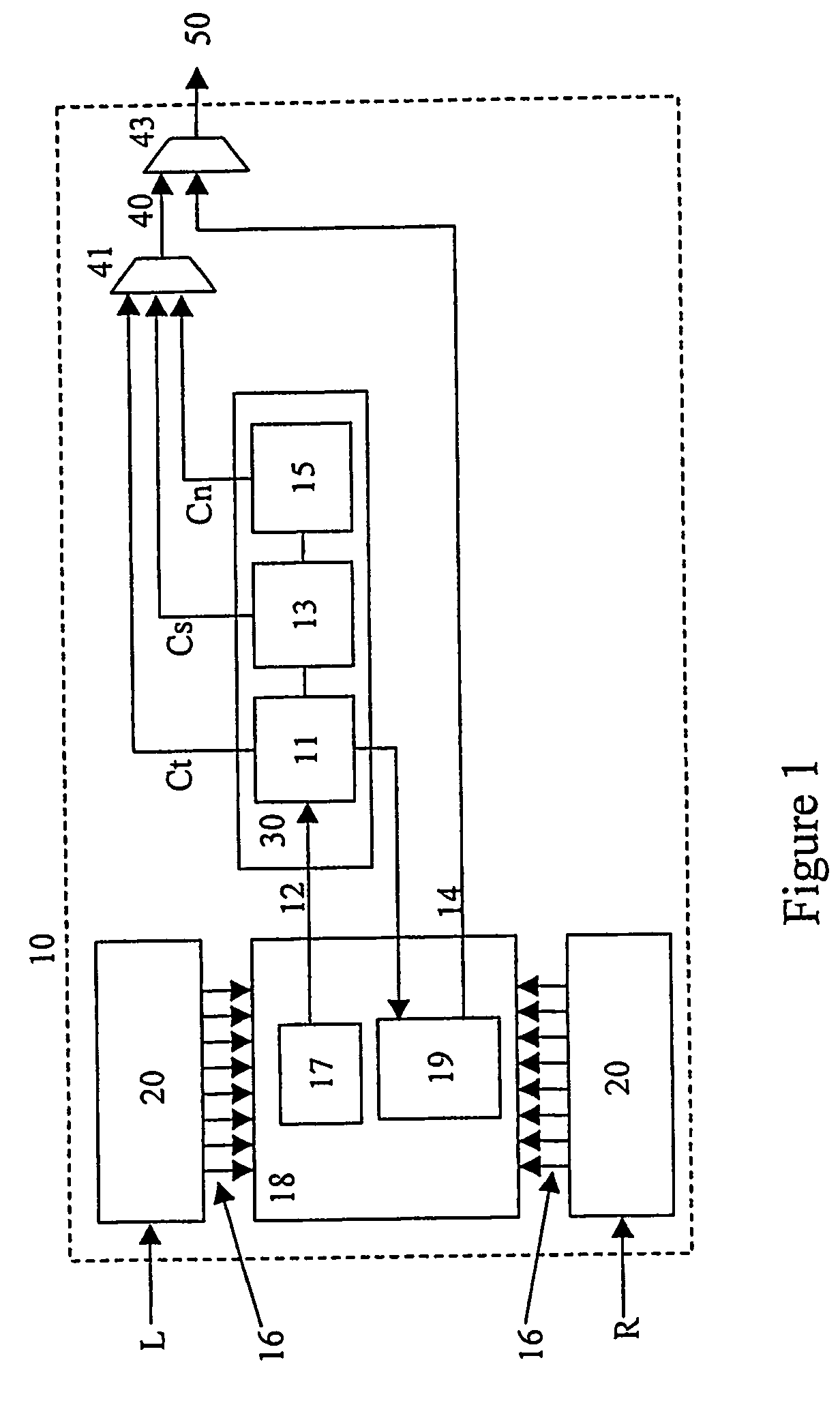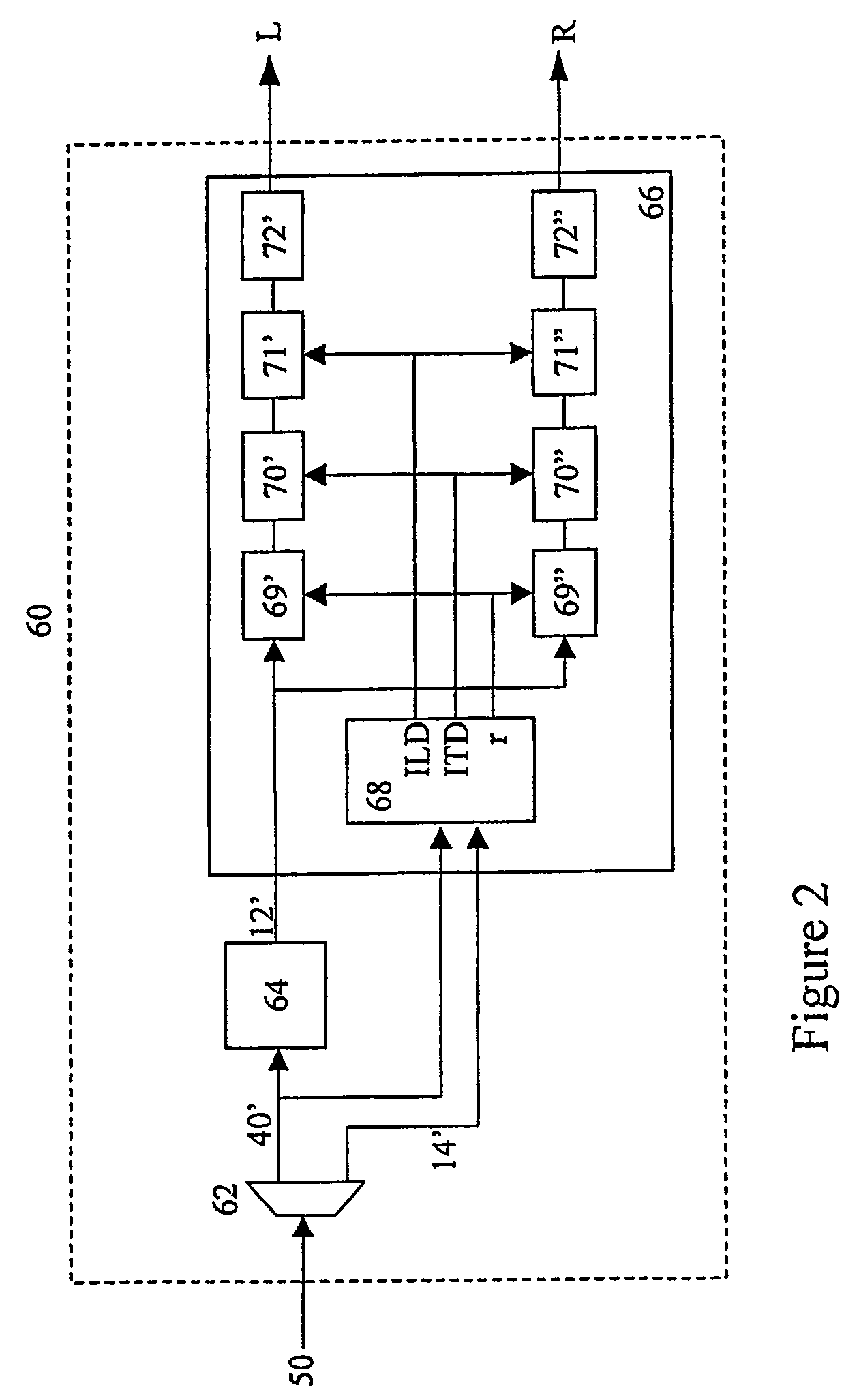Audio coding/decoding with spatial parameters and non-uniform segmentation for transients
a transient and spatial parameter technology, applied in the field of audio coding, can solve the problems that the technique of monaural signals has been limited, and achieve the effect of mitigating the artifacts of parametric multi-channel coding
- Summary
- Abstract
- Description
- Claims
- Application Information
AI Technical Summary
Benefits of technology
Problems solved by technology
Method used
Image
Examples
Embodiment Construction
[0024]Referring now to FIG. 1, there is shown an encoder 10 according to a preferred embodiment of the present invention for encoding a stereo audio signal comprising left (L) and right (R) input signals. In the preferred embodiment, as in European Patent Application No. 02076588.9 filed April, 2002, the encoder describes a multi-channel audio signal with:[0025]one monaural signal 12, comprising a combination of the multiple input audio signals, and[0026]for each additional auditory channel, a set of spatial parameters 14 comprising: two localization cues (ILD, and ITD or IPD) and a parameter (r) that describes the similarity or dissimilarity of the waveforms that cannot be accounted for by ILDs and / or ITDs (e.g., the maximum of the cross-correlation function) preferably for every time / frequency slot.
[0027]The set(s) of spatial parameters can be used as an enhancement layer by audio coders. For example, a mono signal is transmitted if only a low bit-rate is allowed, while by includi...
PUM
 Login to View More
Login to View More Abstract
Description
Claims
Application Information
 Login to View More
Login to View More - R&D
- Intellectual Property
- Life Sciences
- Materials
- Tech Scout
- Unparalleled Data Quality
- Higher Quality Content
- 60% Fewer Hallucinations
Browse by: Latest US Patents, China's latest patents, Technical Efficacy Thesaurus, Application Domain, Technology Topic, Popular Technical Reports.
© 2025 PatSnap. All rights reserved.Legal|Privacy policy|Modern Slavery Act Transparency Statement|Sitemap|About US| Contact US: help@patsnap.com



